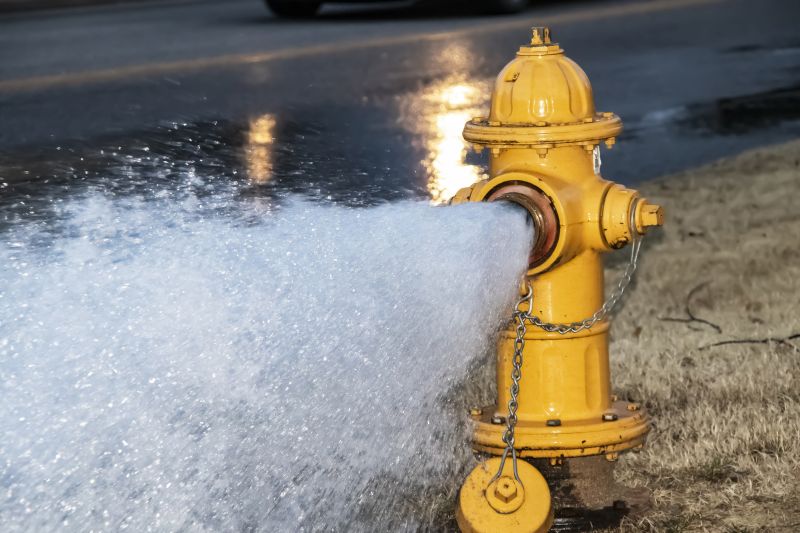Popular Ground Hydrant Mounting Options For Safe and Stable Installation
Discover the most trusted mounting products that enhance safety and stability for ground hydrant setups.
 Ground hydrant mounting products are essential components in the installation and maintenance of outdoor water access points. These products provide a stable and secure foundation for hydrants, ensuring reliable operation and longevity in various environments. When selecting mounting solutions, considerations such as durability, ease of installation, and compatibility with existing infrastructure are important. Different mounting types cater to diverse needs, from residential properties to large-scale municipal or agricultural applications.
Ground hydrant mounting products are essential components in the installation and maintenance of outdoor water access points. These products provide a stable and secure foundation for hydrants, ensuring reliable operation and longevity in various environments. When selecting mounting solutions, considerations such as durability, ease of installation, and compatibility with existing infrastructure are important. Different mounting types cater to diverse needs, from residential properties to large-scale municipal or agricultural applications.
Types of Products For Ground Hydrant Mountings
Bolt-On Mounting Brackets
Simple and effective brackets that attach directly to hydrants and secure them to concrete or soil bases, suitable for various sizes.
Underground Mounting Assemblies
Complete systems installed below ground level, providing a hidden and stable foundation for hydrants in high-traffic or harsh environments.
Adjustable Support Bases
Bases with adjustable height and angle features, allowing customization for different terrain and installation needs.
Concrete Anchoring Kits
Pre-packaged kits that include anchors and fasteners for securing hydrants directly into concrete surfaces.
Clamp Mounting Systems
Clamp-based solutions that secure hydrants to existing structures or pipes, offering flexibility in installation.
Post Mounts
Vertical support posts that elevate hydrants and provide easy access for maintenance and operation.
Base Plate Mounts
Flat plates that bolt onto the ground and serve as a stable foundation for hydrants, often used in temporary setups.
Spring-Loaded Mounts
Mounts with shock absorption features designed to reduce stress on the hydrant in areas prone to ground movement.
Corrosion-Resistant Mounts
Made from materials like stainless steel or coated metals, these mounts resist rust and corrosion in wet environments.
Vibration Damping Mounts
Designed to minimize vibrations transmitted to the hydrant, prolonging its lifespan and reducing maintenance needs.
Quick-Release Mounting Systems
Features that allow for rapid removal and installation, ideal for maintenance or relocation purposes.
Flexible Pipe Mounts
Mounts that accommodate flexible piping connections, providing adaptability in complex installations.
Security Mounts
Enhanced locking features to prevent theft or unauthorized removal of hydrants.
Weatherproof Mounts
Designed with weather-resistant coatings and materials to withstand outdoor exposure.
Heavy-Duty Steel Mounts
Robust steel constructions suitable for heavy-duty applications and high-traffic areas.
Popular Choices
Widely used for their flexibility and ease of installation across different terrains.
Commonly selected for permanent installations requiring a solid foundation.
Favored for their straightforward setup and compatibility with various hydrant models.
Popular in municipal and agricultural settings for their durability and hidden support.
Chosen for outdoor environments with high moisture exposure.
Preferred for maintenance ease and rapid deployment.
Selected in areas with ground movement or heavy machinery activity.
Common in high-traffic or industrial applications for their strength.
Often used in residential or park settings for accessibility and visibility.
Popular in regions with harsh weather conditions to ensure longevity.
Chosen in public or high-value areas to prevent tampering or theft.
Selected for complex piping arrangements and adaptable setups.
Used for temporary or semi-permanent installations requiring quick setup.
Ideal in areas prone to ground shifts or vehicle impacts.
Favored for their versatility in uneven terrains.
Popular for their flexibility and compatibility with existing structures.
Chosen for added protection in public spaces.
The core purpose of ground hydrant mountings is to securely anchor the hydrant to the ground, preventing movement and potential damage caused by external forces or frequent use. Many mounting systems are designed to withstand harsh weather conditions, corrosion, and soil movement, contributing to a long service life. Installation methods can vary from simple bolt-on brackets to more complex underground assemblies, depending on the specific application and site requirements.
Properly chosen mounting products also facilitate maintenance and access. Some systems incorporate features that allow for easier removal or adjustment of the hydrant, reducing labor time and increasing safety during servicing. It is important to evaluate the compatibility of mounting products with the hydrant size and type, as well as the soil and environmental conditions of the installation site. Investing in high-quality mounting solutions can help ensure the functionality and safety of the water access point over years of use.
Key Buying Considerations
- Compatibility with the specific hydrant model and size.
- Materials used, ensuring resistance to corrosion and weather elements.
- Type of installation—whether above ground, underground, or hybrid.
- Soil and ground conditions at the installation site.
- Ease of installation and maintenance access.
- Load-bearing capacity and stability requirements.
- Vibration and shock absorption features, especially in high-traffic areas.
- Security features to prevent theft or tampering.
- Adjustability for uneven terrain or future modifications.
- Compliance with local standards and regulations.
- Durability and expected lifespan of the mounting system.
- Cost considerations balanced with quality and features.
- Compatibility with piping and connection types.
- Presence of additional features like quick-release mechanisms.
- Environmental exposure factors such as moisture, salt, or chemicals.
